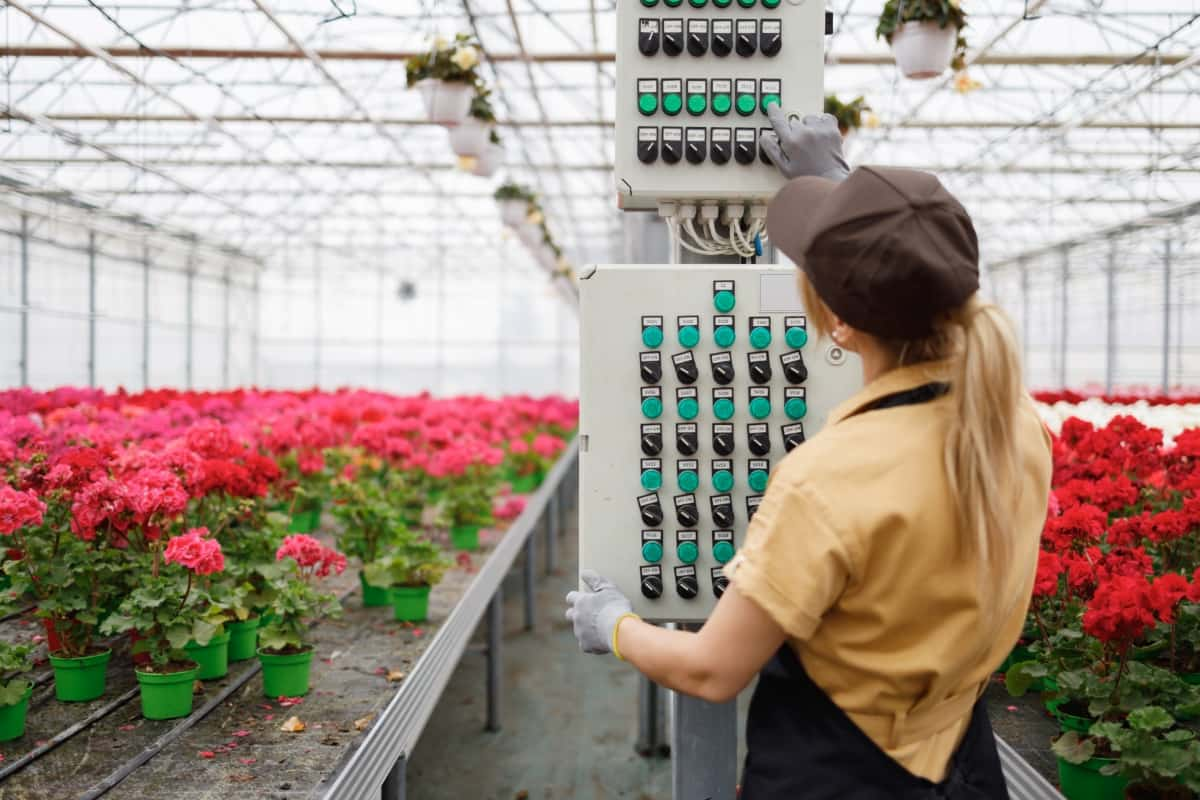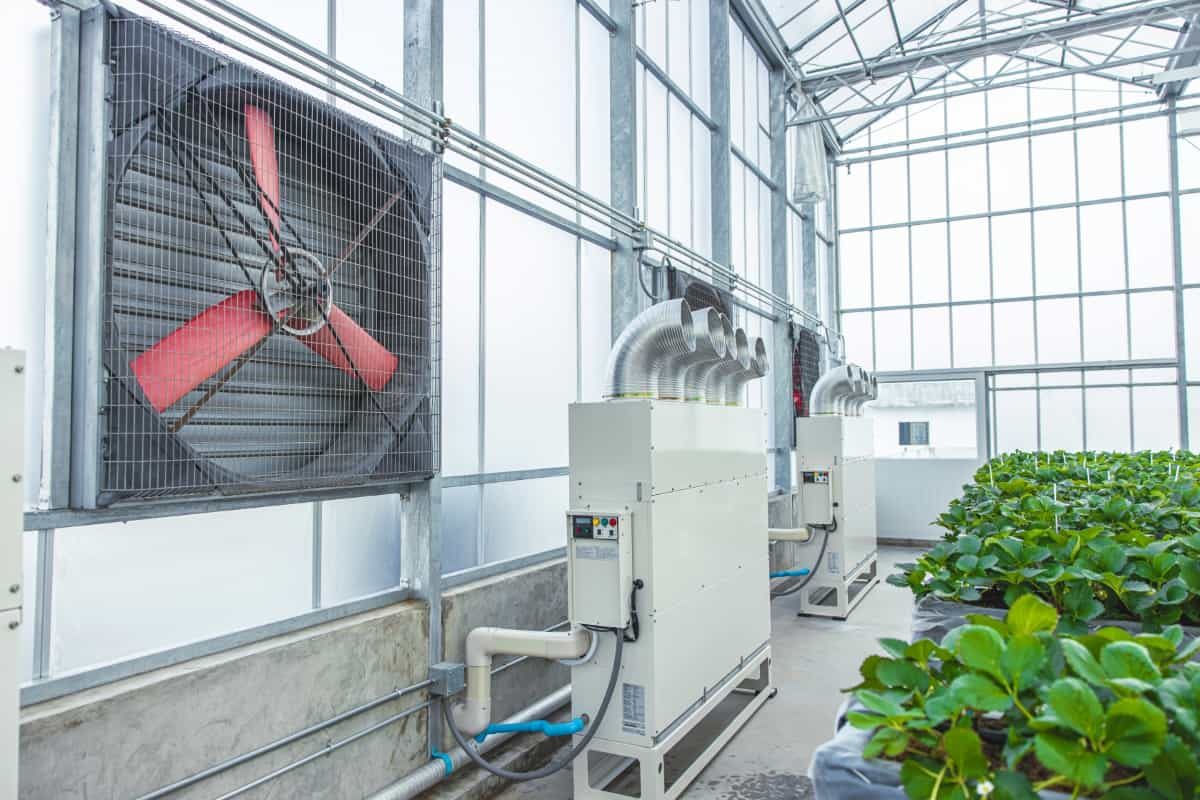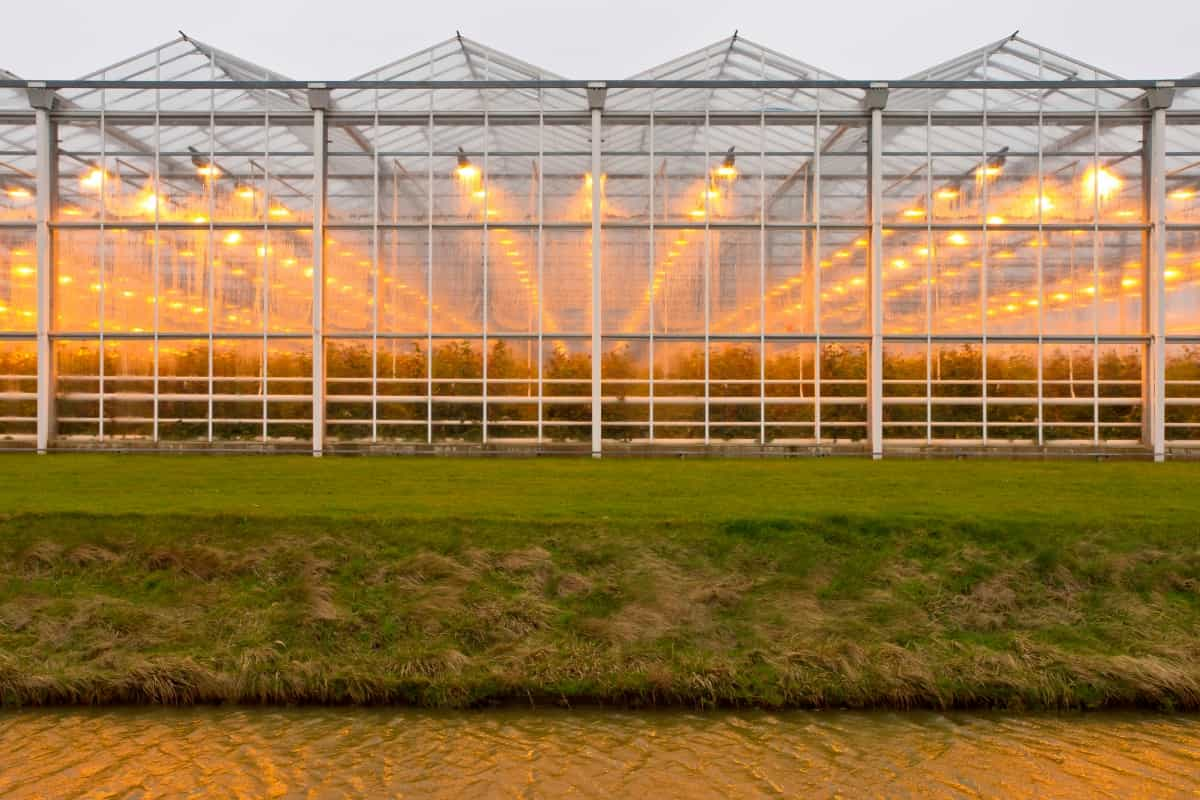Greenhouses allow us to grow fresh produce year-round, irrespective of weather conditions. Greenhouse climate control maintains the ideal temperature, humidity, and light levels inside a greenhouse to support plant growth.

Greenhouse Climate Control and Ventilation Strategies
Best Greenhouse Climate Control System for Year-Round Gardening
- One system is a fully automated system that can monitor and adjust temperature, humidity, lighting, and other environmental factors automatically. This system saves time and energy while providing consistent conditions for your plants.
- Another manually controlled system allows you to adjust based on daily weather changes or specific plant requirements. This type of system requires more attention but gives you greater flexibility.
- Ultimately, the best greenhouse climate control system will depend on the size of your greenhouse, your budget, and the types of greenhouse plants you want to grow.
How to Optimize Greenhouse Ventilation for Plant Health
- Greenhouse ventilation is crucial to maintain a healthy growing environment for plants. Without proper ventilation, a greenhouse’s temperature and humidity levels can quickly rise to high levels, leading to plant stress and even death.
- The primary purpose of greenhouse ventilation is to regulate temperature, humidity, and air quality. This process involves exchanging stale or hot air with fresh outside air. The ideal amount of ventilation will depend on factors like the size of the greenhouse, location, type of crops grown, and weather conditions.
- Natural ventilation is one option that relies on passive airflow through vents strategically placed around the structure. Mechanical ventilation systems are another option for fans or exhaust systems connected to thermostats or environmental control systems.
- Properly designed venting systems should be able to circulate all areas within the greenhouse. In addition, ventilating at night when temperatures cool down helps prevent moisture build-up from condensation forming on leaves and surfaces.
Energy-Efficient Greenhouse Cooling and Heating Solutions
- In colder months, a greenhouse heater is necessary to keep the temperature warm enough for plants to thrive. On the other hand, during summer days, a cooling system is needed to prevent overheating that could cause damage or even death to plants.
- There are several types of greenhouse heaters available in the market today. Electric heaters are popular as they provide consistent heat and can be safely used indoors without producing harmful fumes. Gas heaters are also an option but require proper ventilation due to carbon monoxide emissions.
- Natural methods such as shade cloths and ventilation through windows and doors can help regulate temperature levels for cooling a greenhouse. However, in extreme weather conditions where natural methods may not suffice, mechanical systems like fans or air conditioning units may be required.
- Furthermore, natural ventilation systems such as roof vents can provide free air circulation throughout the day when temperatures are mild enough outside.
The Importance of Proper Airflow in Greenhouse Climate Management
Proper airflow is an essential aspect of greenhouse climate management. It refers to the controlled movement of air within a structure, which is crucial in regulating temperature, humidity, and carbon dioxide levels. Without adequate ventilation, greenhouses can become hot and humid environments prone to disease outbreaks, pest infestations, and poor crop growth.
In case you missed it: Creating a Solid Greenhouse Farming Business Plan: For More Yields and Profit

Additionally, good airflow prevents moisture build-up on leaves and surfaces inside the greenhouse. Excessive moisture can lead to fungal infections or diseases spreading quickly throughout your crops. Proper ventilation also helps regulate temperature levels by removing excess heat during summer months through convection currents.
Choosing the Right Greenhouse Ventilation System for High Humidity Areas
- One option is natural ventilation, which relies on vents or windows to allow air circulation. However, in high-humidity areas, this may not be enough. Mechanical ventilation systems like exhaust fans or evaporative cooling units can help regulate temperature and remove excess moisture from the air.
- It’s important to consider the greenhouse size when selecting a ventilation system. A larger greenhouse may require multiple fans or units to ensure adequate airflow.
- Choosing the right greenhouse ventilation system for high-humidity areas requires careful consideration of size and maintenance needs. Properly ventilating your greenhouse will not only benefit plant health but also create a more comfortable growing environment for you as well.
Effective Greenhouse Cooling Strategies for Hot Summer Climates
- Proper ventilation is the most important step in keeping a greenhouse cool during summer. This means opening vents or doors to allow fresh air into the space while also allowing stale air to exit. Fans can help circulate the air and reduce temperatures.
- Another effective strategy for cooling a greenhouse during hot summers is shading. Applying shade cloth over the top of the structure will prevent direct sunlight from entering while still allowing necessary light levels for plant growth. You could also apply reflective materials such as aluminum foil on walls or roofs to reflect sun rays away from your plants.
- A next strategy would be utilizing evaporative cooling methods like swamp coolers that use water evaporation processes to lower temperatures inside greenhouses naturally instead of relying on energy-intensive AC units that may consume more energy than necessary.
Tips to Maintain Optimal Temperature and Humidity Levels in a Greenhouse
- To achieve optimal temperature conditions for your plants, consider using a variety of heating and cooling solutions, such as fans, vents, or shade cloths, depending on your location. During hot summer, you might need an automated system to cool the air inside by bringing in fresh outdoor air through vents.
- Another important aspect of greenhouse climate control is humidity management. High humidity levels can lead to fungal disease outbreaks, while low humidity can cause plant dehydration. Use special equipment like humidifiers or misting systems to maintain optimal moisture content for your crops.
- Another key strategy for maintaining optimal temperature and humidity levels is using sensors and automation systems. These tools allow you to monitor temperature changes and adjust heating or cooling mechanisms. Automated watering systems can help regulate humidity levels by ensuring plants receive adequate moisture without over-saturating the air.
- Another crucial factor in maintaining an optimal climate within your greenhouse is ventilation. Installing fans or vents throughout the space can help circulate air more effectively while allowing for natural ventilation from outside sources.
Greenhouse Ventilation Techniques for Preventing Plant Diseases
- Remember that there is enough space between plants to allow air circulation. Crowded plants increase humidity levels and prevent fresh air from reaching all greenhouse areas, making spreading diseases easier.
- Use fans or natural wind flow to keep air moving throughout the greenhouse. Fans help distribute heat evenly and reduce stagnant pockets of air where bacteria and fungi can grow.
- Consider installing vents or louvers on your greenhouse’s roof or walls. They allow hot air to escape during the day while bringing cooler outside air into the space at night when temperatures drop.
- Regularly clean your greenhouse equipment, such as pots, tools, and benches, with disinfectant solutions before introducing new seeds or seedlings into your growing area. This practice helps reduce cross-contamination between different crops.
The Role of Automated Climate Control in Greenhouse Productivity
Automated climate control systems have revolutionized the way we manage greenhouse environments. These cutting-edge technologies provide growers with precise and accurate temperature, humidity, and ventilation monitoring. This means growers can focus on other important aspects of their farming operations while leaving climate management to specialized software.
Automated systems use sensors that detect when temperature or humidity levels exceed a certain threshold, activating cooling fans or heaters only when necessary.
Sustainable Greenhouse Climate Control Solutions for Eco-friendly Farming
- One solution is using natural ventilation systems that promote airflow within the greenhouse. These systems can be as simple as installing vents or fans that provide adequate fresh air circulation for plants, eliminating stagnant air pockets that harbor pests and diseases.
- Another sustainable solution is utilizing energy-efficient climate control technology designed to regulate temperature and humidity levels without wasting energy. This includes sensors and automation systems that adjust heating, cooling, and watering according to plant needs.
- Adopting sustainable greenhouse climate control solutions benefits the environment and maximizes crop production while minimizing operational expenses for farmers. By reducing our carbon footprint through innovative eco-friendly practices in agriculture, we pave the way toward a more sustainable future.
In case you missed it: Frequently Asked Questions About Greenhouse Farming

Conclusion
Greenhouse climate and ventilation are crucial for maintaining plant health and productivity. It ensures that plants receive a constant supply of fresh air, preventing the build-up of harmful gases and excess moisture that can lead to fungal diseases. Temperature management is crucial as it affects plant growth rates and overall health.
- Feed Your Flock for Less: Top 10 Tips to Save on Chicken Feed
- Ultimate Guide to Ossabaw Island Hog: Breeding, Raising, Diet, and Care
- Hatching Answers: The Top 10 Reasons Your Chickens Aren’t Laying Eggs
- Eggs and Economics: Breaking Down the Cost of Raising Backyard Chickens
- Defend Your Greens: Proven Methods to Keep Iguanas Out of Your Garden
- Ultimate Guide to Cinnamon Queen Chicken: A Comprehensive Guide for Beginners
- Ultimate Guide to California Tan Chicken: Breeding, Raising, Diet, Egg-Production and Care
- Ultimate Guide to Marsh Daisy Chicken: Breeding, Raising, Diet, and Care
- 10 Types of Chicken Farming Businesses You Can Start for Profits